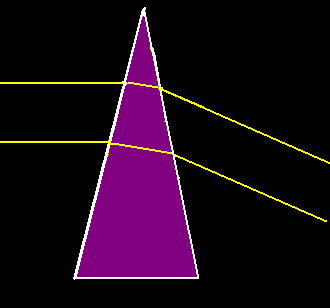
Light changes direction when it goes through a prism. This effect is called refraction.

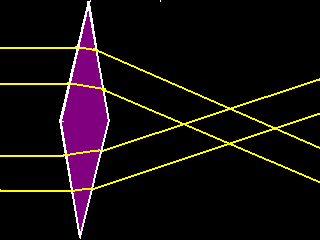
The upper prism bends the beams down, and the lower prism bends the
beams up, so that beams are made to cross.
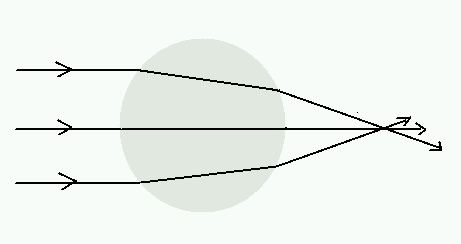
The light beams that strike
a round bottle full of water are deflected into different directions,
because they encounter different parts of the surface.
By using a nicely curved lens instead of straight
sides, we can make the parallel beams of light shown on the left come together
at one place, called the focal point.
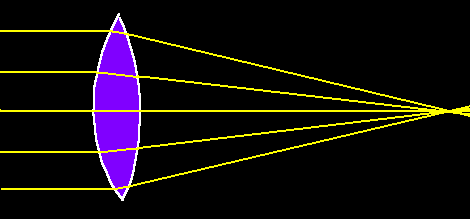
If there is a screen at the focal point, we get a tiny
spot of light which is actually an image of the source.
When the screen is in the wrong place, we get an out-of-focus
picture.
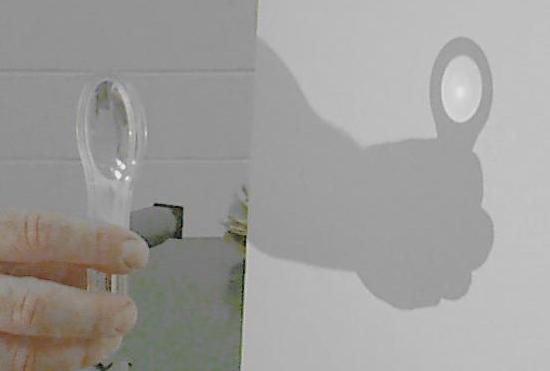
| The lens is too far from the screen |
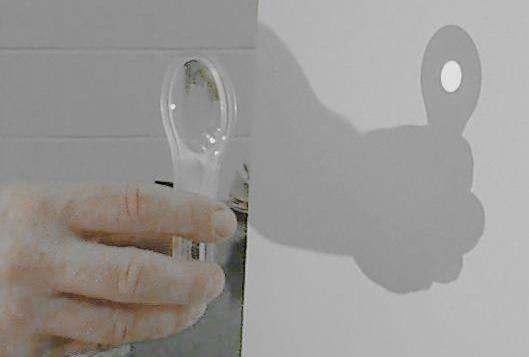
| Still too far |
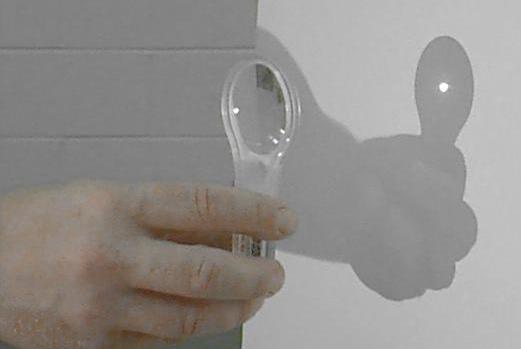
| Just right |
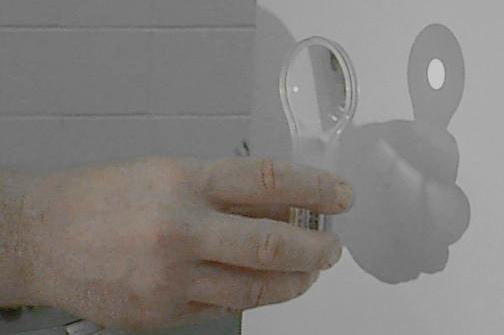
| Too close |
A vial of water makes a cylindrical lens, which is a
kind of positive lens (but very astigmatic -- it only
focuses in one plane).
The deflection of the light takes place entirely
at the surface of the lens. So we can make a thinner lens by removing the
stuff inside, so long as we keep the same curved
shapes at the surface. The surface of this kind of lens is made
of ridges of special shape. This is called a Fresnel lens
(pronounced
fre-nel') in honor of its inventor. This is how the flat lenses
in your kit were made.
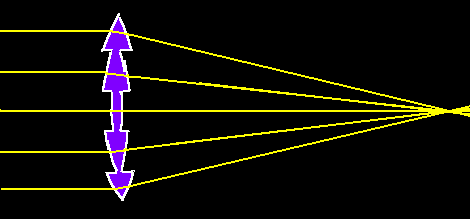
There are also lenses that make parallel beams diverge. These are called
negative lenses, and the convergent kind are called positive
lenses when we wish to distinguish them. The nomenclature is appropriate
-- they do opposite things.
Frequently there is a tiny bubble in the glass vial
after you fill it with water. What kind of lens
does the bubble make?
If you combine a positive lens and a negative lens, you might get no
lens at all (the beams are again parallel).
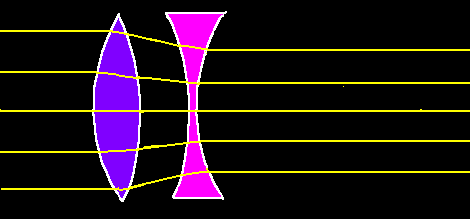
Positive lenses can be used as magnifiers. It works best if you hold the lens right at your eye; then all that is going on is that these lenses let us look at an object more closely; little things look big, from close up!
One use for lenses is to correct our vision. Near-sighted people have lenses in their eyes that are too strong, and so their glasses are made with negative lenses. As we get older, the eye lens loses its ability to adjust to let us see things at different distances; then we need a positive lens so that we can hold a book close enough to read it.
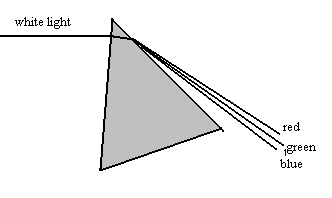
The refraction of a beam of light depends on its wavelength;
different colors of light are refracted slightly different amounts. This is
how a prism separates white light to display its spectrum. This only
works well when the prism is turned so that the outgoing beam
is almost parallel to the surface of the prism.
Box:
What have we learned about prisms and lenses?